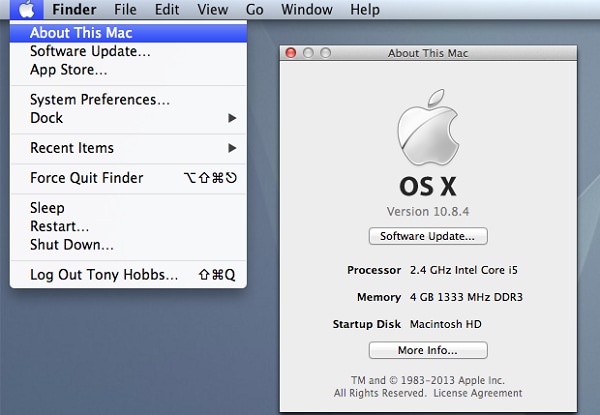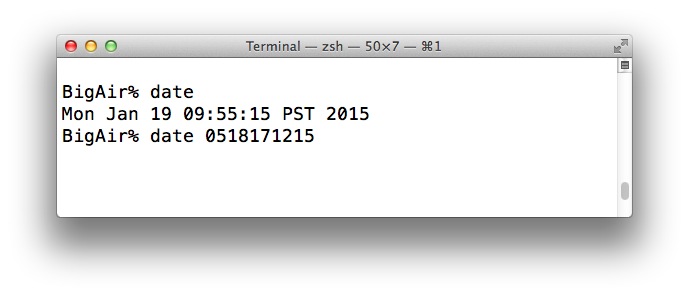In general, it takes about 30 seconds for a Mac machine to fully startup, depending on the hardware configuration though. For example, Macs with flash storage (solid-state drive) load much faster than those with HDDs (hard disk drive).
Years back, ZolloTech did a comparison test on the startup time between an SSD-based MacBook Pro and an HDD-based one. The result? The MacBook with SSD only took 22 seconds to fully startup while the other was 49 seconds.
If your Mac become unresponsive during setup, first allow your Mac to complete the process. If it is taking too long (hours), then reset the System Management Controller (SMC) on your Mac to fix this problem. Here is how: Resetting the SMC is done slightly differently depending on the type of Mac you have. El Capitan is bringing a lot of joy to Mac users, but it’s also bringing a lot of frustrating issues. El Capitan has a software version number of 10.11 and since its release, at the time of writing, there have been five updates (10.11.5 being the most recent) focused on addressing a long list of El Capitan problems. Download Apple Mac OS X El Capitan for Mac to oS X El Capitan features new options for managing windows, smarter Spotlight search, app enhancements, and faster performance. 'Set back' the Mac's internal clock. It sounds illogical, but try it. How to do this: a. Open the date and time pref pane. UNCHECK the box 'set date and time automatically' then c. Set your clock back to Jan 1, 2017. Reboot NOW try the install over again. Download Mac OS X El Capitan DMG File – (Direct Links) However, for downloading macOS X El Capitan, if you’ve an old version of macOS X, you can probably download macOS X El Capitan from the App Store. Otherwise, you can’t download macOS X El Capitan from the Store since it’s not available there.
So, it’s pretty clear that a MacBook with an SSD is a lot faster than a traditional HDD. We thus highly recommend you upgrade the hard drive if your old MacBook is very slow on startup. See the best SSD upgrades here. How to check if your Mac is with an HDD or SSD? Just click Apple logo > About This Mac > Storage.
Now let’s go back to the topic of this post. If your MacBook Pro takes more than 30 seconds to boot, or even minutes, beware that your Mac may have performance issues.
We’ve found 6 possible causes and related fixes to boost MacBook startup times. Some fixes work better than others. We’ll show you all of them so you can determine why your Mac is slow on startup and figure out the best tune-up solution.
1. You just installed a new macOS
If you just updated your MacBook Pro to latest macOS Catalina (learn how if you haven’t done so), you probably have noticed that your Mac takes longer to fully load up and respond to general tasks. This is normal because some apps (especially Spotlight, and Photos) need to re-index or update its data.
How to fix: keep your Mac on for 24-48 hours, and restart several times after that. If that still doesn’t help, you may need to enable TRIM (more below).
Why this helps: apps like Spotlight and Photos usually need quite some time to re-index data. For example, Spotlight has to scan the internal hard drive and reindex all the files, likewise, Photos (formerly iPhoto) may update the while photos library as well. The process could take a significant amount of time to complete, and lots of system resources are required for the task. Once completed, your Mac’s overall performance would improve automatically.
If your MacBook Pro (with SSD) still runs slowly on startup, consider enabling TRIM and the whole process takes only a minute or so. This thread has more.
2. Your Mac has too many login items
Like a car, it can be much slower to take off to 60 MPH if you’ve got loads of heavy items in the trunk. The same goes with a MacBook Pro. Your Mac will take longer to fully boot up if it has dozens of login items and launch agents (i.e. applications and services that automatically launch every time you press the start button on your Mac).
How to fix: remove unnecessary Login Items.
- Click the Apple logo on the top left corner, then select System Preferences.
- Find Users & Groups and click on it.
- See the Login Items tab next to Password? Click it.
- Here you’ll see a list of apps that run when you turn on your Mac. Check the apps you don’t need, select the checkbox in the “Hide” column, then click the “-” icon.
You can also do so by using CleanMyMac, via the “Login Items” and “Launch Agents” features. By the way, some auto-startup services may not show up on Login Items, but you can find and disable them via Launch Agents within CleanMyMac. Here’s a screenshot:
3. Your Mac’s hard drive is nearly full
Nothing slows down a MacBook Pro more than having an almost full disk, even if your Mac is with a high-performance SSD. You’ll notice your Mac lags not only on startup, but during normal usage as well.
How to fix: clean up your MacBook hard drive until it has at least 20% free space.

The easiest way to get this done is to use a cleaning app such as CleanMyMac. It can save you tons of time locating those unused third-party programs, junk junks, and large old files that are safe for removal.

Meanwhile, if your MacBook Pro is filled with copies of backups and pictures, chances are you’ve got many duplicates or similar files. Try Gemini 2 to find those duplicates and delete them.
Macbook Air Taking Long Time To Download El Capitan Mac Os
If you prefer to do this manually, start with checking those folders where you tend to save your pictures and movies. Then go to the “Applications” folder, sort apps based on last modified or used, remove those you no longer use. Don’t forget the web browsers — Safari, Chrome, and Firefox. Clear the web caches, history, and outdated extensions. Last but not least, transferring big files to your external hard drive would help lighten your Mac too.
4. Disk permission issues
MacOS system files are usually saved on a hard disk — primarily “Macintosh HD”. Disk errors can occur due to poorly designed third-party applications/add-ons, and when those errors add up your Mac startup can slow down, even worse, unable to boot up.
How to fix: verify and repair disk permissions

If your MacBook runs OS X Yosemite or an older version, use the build-in Disk Utility. Learn the detailed step-by-step instructions from this Apple support guide. For Macs with El Capitan or later versions including latest Catalina, unfortunately Apple has taken away the disk repair functionality. Fortunately, you can do so with CleanMyMac (open the app > Maintenance > Repair Disk Permissions)
5. Corrupted preferences files
The preferences files on a Mac are those files that keep the parameters — i.e. rules that define how applications behave. If they are broken due to application crashes or hard drive corruption, your Mac will start up and run slowly.
Macbook Air Taking Long Time To Download El Capitan 10.11
How to fix: find and update those broken preferences files
They are usually stored in the ~/Library/Preferences folder. To fix them, you’ll have to delete them first and create new up-to-date preference files. Learn more from this MacObserver article on how to get started.
Macbook Air Taking Long Time To Download El Capitan Dmg
6. SMC and NVRAM need to be reset
Macbook Air Taking Long Time To Download El Capitan Os
If your MacBook is not only slow to boot, but together with some wonky issue such as trackpad doesn’t work (or not responding), can’t connect to Wifi, status light or battery acted abnormally. Then something is probably wrong with your Mac’s system management controller (SMC) or non-volatile random-access memory (NVRAM).

How to fix: resetting SMC and NVRAM

- To reset SMC, see this official Apple guide.
- To reset NVRAM, refer to this article.
Feedback?
Do you find the above diagnoses and solutions helpful? Did you manage to speed up the startup time on your MacBook Pro? If so, kindly let us know by leaving a comment below.